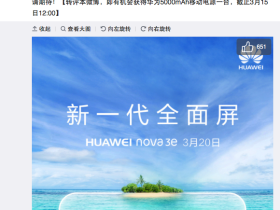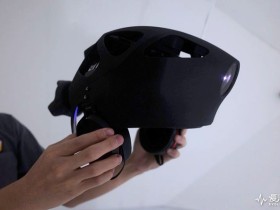- A+
callbar,深圳有哪些让你疯狂打call的餐厅?
深圳这几家创意十足的潮酷餐厅,有几家还没去过?
AT艺境味觉
一家将现代艺术融入传统味觉的概念餐饮空间,餐厅会不定期邀请国内外优秀艺术家及设计师进行各种有趣味的主题展览。
这里既是一家高雅的艺术画廊,也是一个在艺术品的环绕中享用精致美食的餐厅。其中烤羊排的人气很高,外焦里嫩,肉烂味香。
Grookit酒电厨房
门口只有一个低调迷你的招牌,这是一个深夜食堂,一般都会营业到比较晚的时间,以日式便当为主,烧烤这一元素也不可或缺,很适合年轻人。
MET restaurant and bar
主打健康全日早餐、分享型大份牛排,还有一系列的主食简餐、咖啡、鸡尾酒等。招牌美味有香茅烤鸡、青柠鱼扒焗饭、黑松露培根野菌意面、澳洲谷饲和牛肉眼牛扒等等,无论是家庭聚餐,还是与朋友聚会,都能随时随地地满足你的需求和期待。
安娜花园(宝能太古城店)
这里的主角是西式甜点,环境清新文艺,如同一处花园,让人感到心旷神怡。
招牌有味道浓郁的巧克力蛋糕、兼具水果的清新与雪糕的甜蜜的芒果探戈蜜糖吐司等等,每一道都可爱至极,除此之外还有奶油蘑菇饭等系列烩饭以及披萨。
朝馆
主色调为黑色,木制方桌很有质感,整体氛围优雅静谧,很有格调。
以北京菜为主,兼有其他各色菜式,创意精致。。大大方方的红楼梦十分有趣,也很开胃,烤鸭是不得不提的一道经典美味,朝馆的烤鸭刀工精湛,制作工艺独到,入口即化。
花厨坊小粤菜音乐餐厅
这是一家专门做粤菜的餐厅人气很高。倾向于创新融合菜。
透明的开放式厨房凸显了餐厅过硬的品质与对自身的信心,翡翠鲜虾豆腐、果木椒盐片皮鸭、金不换三杯鸡等等都值得推荐,油条爱墨鱼则是餐厅创新的很好体现,简简单单的油条,但是其中加入了油炸的墨鱼,配上千岛酱,口感极佳。
花园里·融和菜
餐厅装修设计富有田园风格,比较清新,富有艺术感整体风格轻松雅致,非常适合两人约会聚餐。
餐厅定位属于融合菜,囊括了粤菜,湘菜等等美味,照烧童子鸡几乎是每人必点的招牌菜,味道也毫不马虎。甜品之中的罗马金砖也不容错过,面包干蘸着炼乳,还有冰激凌与草莓等水果,同样份量十足。
里外InOut(海上世界店)
一个新派粤菜餐厅,偏向于传统粤菜、东南亚以及西方菜系的一个融合,运用传统食材,配合上西方香料以及烹饪与摆盘的方式,呈现出健康美味的粤菜。
米斯泰音乐餐吧
一个有着浓郁酒吧氛围的音乐餐吧,设有驻唱,越到晚上越是热闹。主打的泰国菜以及泰式火锅,冬阴功汤底倍受欢迎,与海鲜的搭配十分完美。
浅葱小唱(科技园店)
浅葱小唱是一家音乐餐厅,同时这也是一家川菜馆,酸菜鱼鱼肉柔嫩可口,非常开胃,香辣蟹调味恰到好处,香辣与麻辣之间带着一些甜。
三青四绿·火锅
一份88的青花椒干锅鸡,荤素搭配,份量十足并且品质极佳,吃完干锅之后加青花椒汤底就可以煮火锅了,就餐厅赠送的苕粉和金针菇倒进去,等待全部吃完,发现自己已经吃掉了好几碗米饭。这就是三青四绿·火锅,不仅美味,富有创意,同时文艺感十足,除此之外还有让人心动的实惠价格。
正如其名字,绿色汤是三青四绿·火锅独有的创意料理,是用青花椒等炒出来的,在用作煮火锅的同时还可以当做味道浓郁的汤品。
泰爷门(泰然店)
来自广州的火爆新派川菜,并且是深圳首家分店。
经典的酸菜鱼很是地道,精湛的刀工将鱼肉上的鱼刺悉数剔除,酸菜与酸萝卜的酸味在炖煮之后渗透进了汤汁之中,再加上一碗米饭,将汤汁浇上,回味无穷。
铁板一块铁板烧
餐厅主打的是铁板烧,并在每张台铁板上放了一个小抽风机,让客人在吃饭的时候不至于弄得全身都是气味。
上菜的方式颇为有趣,是底菜与铁板一起端上来的,其余的菜会先添加调味料并炒至半熟再端上来,等到想吃的时候就可以直接放进去继续加工。食材都很新鲜,在调味上与烧烤有些类似,香气四溢,非常下饭。
佐聆佑舍音乐餐厅(南山店)
跳跳鱼是店内的明星菜肴,外焦里嫩的口感很不错。贡椒杏鲍菇同样深受欢迎,微辣的口感刚刚好,十分下饭。
原牛道牛肉火锅(A8音乐大厦店)
一家讲究格调与装修的火锅店。带来的是传统的潮汕火锅,但是以其突出的情调环境俘获了许多吃货的心,尤其是喜欢吃火锅的人,不管在什么日子,都抵挡不了美食的诱惑。
别着急等你什么歌?
《外套2.0》
My baby
I know
You got my back my back
我脱下我的外套披上给你穿
Cause baby
I cannot waste no time
把窗户打开星星都还没数完
I can be your listener
Girl(女孩)陪你煲电话粥
听你说吵架和你best friend(好朋友)
You don't need to
Go to a bar
Call me Kevin Hart
脱口秀对我也并不难
And I know(我知道)
They don't want a war
保护你我随时挡在前头
我陪你against the rule(打破常规)
不用告诉我对错和缘由
我答应过
要为你挡风又遮雨
答应过
也不是故意让你受委屈
快告诉我为什么
让我等了半个钟头
我也都没有
Be mad at you
Cause baby I know
You got my back my back
我脱下我的外套披上给你穿
Cause baby
I cannot waste no time
把窗户打开
星星都还没数完
想问你 what(什么)
到底 什么时候去看那场电影
别着急 等你
什么时候赢得我的肯定
You are my living angel
barber词源?
barber的词源为bar
例句如下,请仔细体会
1.
She had to call a barber to shave him.
她不得不叫个理发师来给他刮脸。
2.
I gave the barber a tip
我给了理发师小费。
3.
He asked the barber to cut his long hair shorter.
他请理发师把他的长头发剪得再短些。
designexpert10使用方法?
DX71-04C-MultifactorRSM-P1.doc Rev. 1/24/07 Multifactor RSM Tutorial (Part 1 – The Basics)
Response Surface Design and Analysis This tutorial shows the use of Design-Expert ® software for response surface methodology (RSM). This class of designs is aimed at process optimization. A case study provides a real-life feel to the exercise.
Due to the specific nature of the case study, a number of features that could be helpful to you for RSM will not be exercised in this tutorial. Many of these features are used in the General One Factor, RSM One Factor or Two-Level Factorial tutorials. If you have not completed all of these tutorials, consider doi
第 1 页
ng so before starting in on this one.
We will presume that you can handle the statistical aspects of RSM. For a good primer on the subject, see RSM Simplified (Anderson and Whitcomb, Productivity, Inc., New York). You will find overviews on RSM and how it’s done via Design-Expert in the on-line Help system. To gain a working knowledge of RSM, we recommend you attend our Response Surface Methods for Process Optimization workshop. Call Stat-Ease or visit our website, www.statease.com , for a schedule.
The case study in this tutorial involves production of a chemical. The two most important responses, designated by the lette
第 2 页
r “y”, are:
• y 1 - Conversion (% of reactants converted to product)
• y 2 - Activity.
The experimenter chose three process factors to study. Their names and levels can be seen in the following table.
Factor
Units Low Level (-1) High Level (+1) A – Time
minutes 40 50 B – Temperature
degrees C 80 90 C – Catalyst percent 2 3
Factors for response surface study
第 3 页
You will study the chemical process with a standard RSM design called a central
composite design (CCD). It’s well suited for fitting a quadratic surface, which usually works well for process optimization. The three-factor layout for the CCD is pictured below. It is composed of a core factorial that forms a cube with sides that are two coded units in length (from -1 to +1 as noted in the table above). The stars represent axial points. How far out from the cube these should go is a matter for much discussion between statisticians? They designate this distance “alpha” – measured in terms of
coded factor levels. As you will see Design-
第 4 页
Expert offers a variety of options for alpha.

Central Composite Design for three factors


第 5 页


第 6 页
Assume that the experiments will be conducted over a two-day period, in two blocks: 1. Twelve runs: composed of eight factorial points, plus four center points.
2. Eight runs: composed of six axial (star) points, plus two more center points.
Design the Experiment
Start the program by finding and double clicking the Design-Expert software icon. Take the quickest route to initiating a new design by clicking the blank-sheet icon on the left of the toolbar. The other route is via File, New Design (or associated Alt keys).
Main menu and tool bar
第 7 页
Click on the Response Surface folder tab to show the designs available for RSM.
Response surface design tab
The default selection is the Central Composite design, which will be used for this case study. Click on the down arrow in the Numeric Factors entry box and Select 3. Ignore the option of including categoric factors in your designs (leave at default of 0
第 8 页
DX71-04C-MultifactorRSM-P1.doc Rev. 1/24/07 To see alternative RSM designs for three factors, click on the choices for Box-
Behnken (17 runs) and Miscellaneous designs, where you find the 3-Level Facto option (32 runs, includ rial ing 5 center points). Now go back and re-select the Central Composite design.
oints set at
1.68719 coded units from the center – a conventional choice for the CCD.
Before entering the factors and ranges, click the Options at the bottom of the CCD screen. Notice that it defaults to a Rotatable
第 9 页


design with the axial (star) p
Default CCD option for alpha set so design will be rotatable
第 10 页
t of may be the “Face Centered” (alpha equal one). Press OK to accept the rotatable value. icking to each cell and entering the details given in the introduction to this case study.


Many of the options are statistical in nature, but one that produces less extreme factor ranges is the “Practical” value for alpha. This is computed by taking the fourth roo th
第 11 页
e number of factors (in this case 3¼ or 1.31607). See RSM Simplified Chapter 8 “Everything You Should Know About CCDs (but dare not ask!)” for details on this practical versus other levels suggested for alpha in CCDs – the most popular of which Using the information provided in the table on page 1 of this tutorial (or on the screen capture below), type in the details for factor Name (A, B, C), Units and levels for low (-1) and high (+1), by tabbing or cl
Completed factor form
第 12 页
You’ve now specified the cubical portion of the CCD. As you did this, Design-Exper calculated the coded distance “alpha” for placement on the star points in the central composite design. Alternatively, by clicking an option further down this scr t een, you could have entered values for alpha levels and let the software figure out the rest. This nd unless you must cut the number of runs to the bare minimum). You will need two blocks for this design, one for each day, so click on the Blocks field and select 2.
would be helpful if you wanted to avoid going out of operating constraints.
Now go back to the bottom of the central composite design form. Leave the Type at i
第 13 页
ts default value of Full


(the other option is a “small” CCD, which we do not recomme
Selecting the number of blocks
Notice that the software displays how this CCD will be laid out in the two blocks. Click on the Continue button to reach the second page of the “wizard” for building a
第 14 页
response surface design. You now have the option of identifying Block Names . Enter Day 1 and Day 2


as shown below.
Block names
Press Continue to enter Responses . Select 2 from the pull down list. Then enter the response Name and Units
第 15 页


for each response as shown below.
Completed response form
At any time in the design-building phase, you can return to the previous page by pressing the Back button. Then you can revise your s
第 16 页
elections. Press the Continue button to get the design layout (your run order may differ due to randomization ).
DX71-04C-MultifactorRSM-P1.doc Rev. 1/24/07
Design-Expert offers many ways to modify the design and how it’s laid out on-screen. Preceding tutorials, especially in Part 2 for the General One Factor, delved into this in detail, so go back and look this over if you haven’t already. Click the Tips button for a
refresher.

第 17 页

Design layout (only partially shown, your run order may differ due to randomization)
Save the Data to Now that you’ve invested some time into your design, it would be prudent to save your work. Click on the File menu item and select Save As .
Save As selection
You can then specify the File name (we suggest tut-RSM ) to Save as type *.dx7” in the Data folder for Design-Expert (or wherever you want to Save
- 我的微信公众号
- 扫一扫关注
-

- 我的新浪微博号
- 扫一扫关注
-





